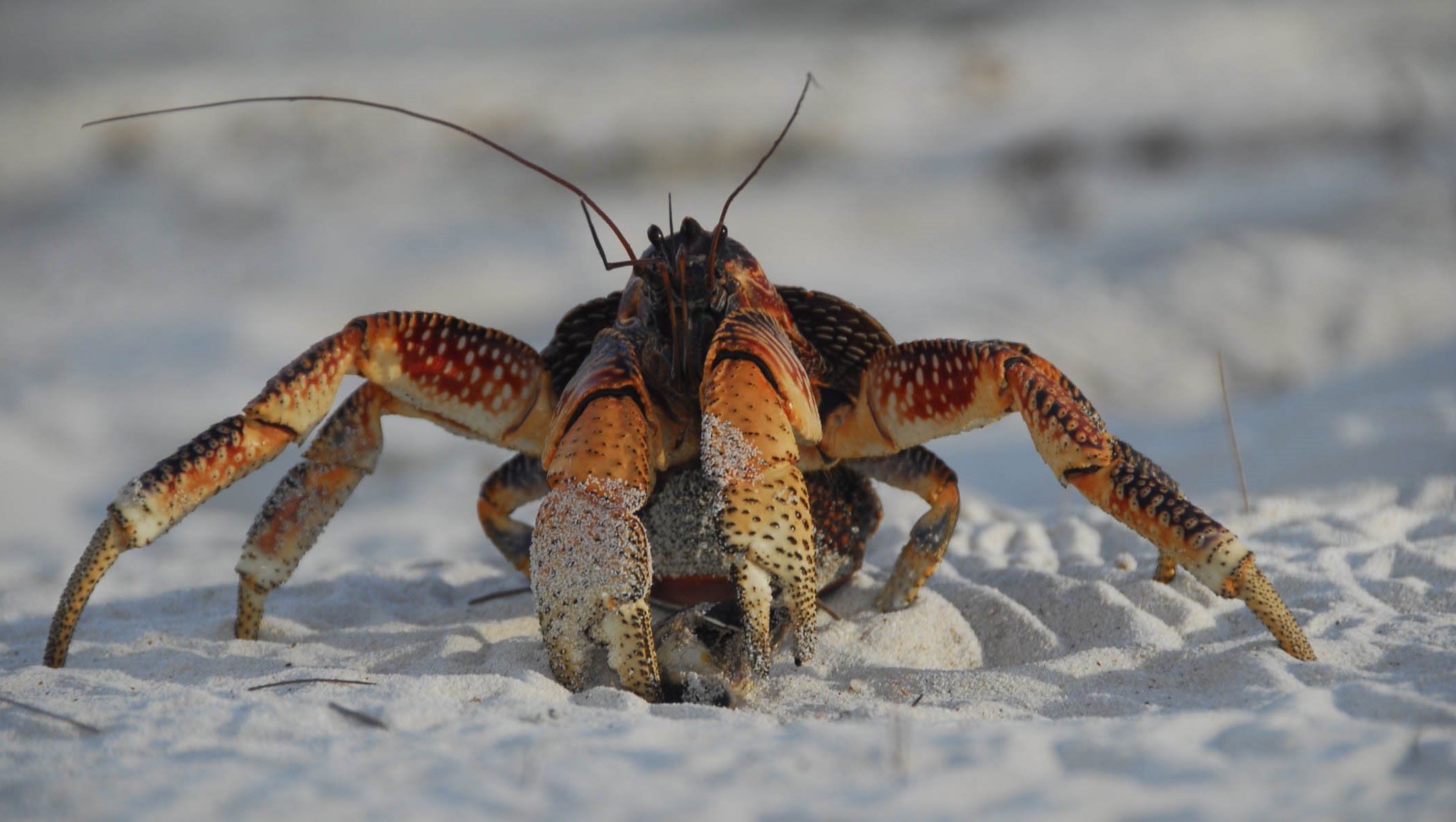
Ever wondered what makes the coconut crab so unique? These fascinating creatures, also known as robber crabs, are the largest land-dwelling arthropods on Earth. With their impressive size and strength, they can crack open coconuts with ease, hence their name. Found primarily on islands in the Indian and Pacific Oceans, coconut crabs have adapted to a life both on land and in trees. Their powerful claws can lift objects up to six times their own weight! Despite their intimidating appearance, they play a crucial role in their ecosystem by helping to decompose organic material. Ready to learn more about these incredible creatures? Let’s dive into 17 amazing facts about coconut crabs!
What Are Coconut Crabs?
Coconut crabs are the largest land-dwelling arthropods on Earth. These fascinating creatures are known for their incredible strength and unique behaviors. Here are some amazing facts about these extraordinary animals.
-
Largest Land Arthropod: Coconut crabs can grow up to 3 feet in leg span and weigh up to 9 pounds, making them the largest land-dwelling arthropods.
-
Powerful Claws: Their claws are incredibly strong and can exert a force of up to 740 pounds, enough to crack open coconuts.
-
Longevity: These crabs can live for over 60 years in the wild, making them one of the longest-living invertebrates.
Habitat and Distribution
Coconut crabs are primarily found on islands in the Indian and Pacific Oceans. They prefer coastal areas with plenty of vegetation and coconut trees.
-
Island Dwellers: They are commonly found on islands such as Christmas Island, the Seychelles, and the Cook Islands.
-
Burrowers: Coconut crabs dig burrows in the ground where they hide during the day and come out at night to forage.
-
Climbers: Despite their size, they are excellent climbers and often climb coconut trees to find food.
Diet and Feeding Habits
Coconut crabs are omnivores with a diet that includes fruits, nuts, seeds, and even small animals. Their name comes from their ability to crack open coconuts.
-
Coconut Crackers: They use their powerful claws to crack open coconuts, which are a significant part of their diet.
-
Scavengers: These crabs also scavenge for dead animals and other organic matter, playing a crucial role in their ecosystem.
-
Opportunistic Feeders: They will eat almost anything they can find, including fruits, leaves, and even other crabs.
Reproduction and Life Cycle
Coconut crabs have a unique reproductive cycle that involves both land and sea. Females release their eggs into the ocean, where they hatch and develop before returning to land.
-
Egg Release: Female coconut crabs release their eggs into the ocean, where they hatch into larvae.
-
Larval Stage: The larvae spend several weeks floating in the ocean before settling on the seabed and eventually moving to land.
-
Juvenile Stage: Young crabs spend their early years in the water before transitioning to a terrestrial lifestyle.
Unique Adaptations
Coconut crabs have several unique adaptations that help them survive in their environment. These adaptations make them one of the most interesting creatures in the animal kingdom.
-
Exoskeleton: Their hard exoskeleton provides protection from predators and helps retain moisture.
-
Gills and Lungs: They have both gills and lungs, allowing them to breathe on land and in water.
-
Molting: Coconut crabs molt their exoskeletons as they grow, a process that can take several weeks.
Conservation Status
Despite their impressive size and strength, coconut crabs face several threats that impact their populations.
-
Habitat Loss: Deforestation and human development are major threats to their natural habitats.
-
Hunting: In some areas, coconut crabs are hunted for their meat, which is considered a delicacy.
Coconut crabs are truly remarkable creatures with many unique characteristics. Understanding these facts helps us appreciate and protect these incredible animals.
Coconut Crabs: Nature's Marvels
Coconut crabs are truly fascinating creatures. Their massive size, incredible strength, and unique behaviors make them stand out in the animal kingdom. These crabs can grow up to three feet across and weigh up to nine pounds. They’re known for their ability to crack open coconuts with their powerful claws, a feat few other animals can achieve.
Living on islands in the Indian and Pacific Oceans, coconut crabs have adapted to a variety of environments. They can climb trees, dig burrows, and even survive without water for extended periods. Their diet includes fruits, nuts, and even small animals, showcasing their versatility.
Understanding these crabs helps us appreciate the diversity of life on our planet. Next time you think about crabs, remember these incredible creatures and their unique place in nature. They’re not just crabs; they’re nature’s marvels.
Was this page helpful?
Our commitment to delivering trustworthy and engaging content is at the heart of what we do. Each fact on our site is contributed by real users like you, bringing a wealth of diverse insights and information. To ensure the highest standards of accuracy and reliability, our dedicated editors meticulously review each submission. This process guarantees that the facts we share are not only fascinating but also credible. Trust in our commitment to quality and authenticity as you explore and learn with us.


